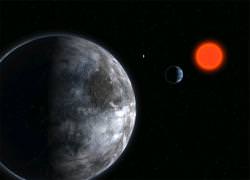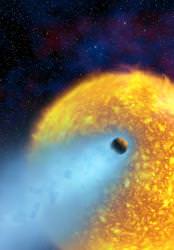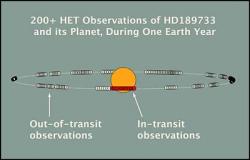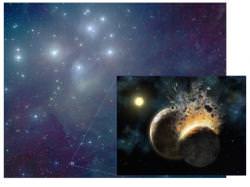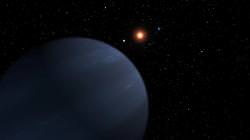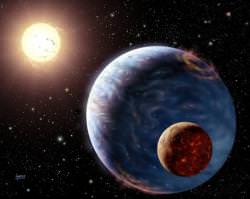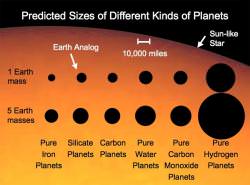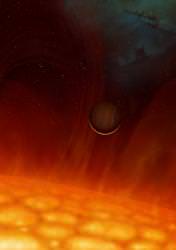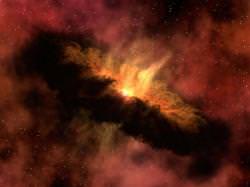The discovery of Gliese 581 was one of the most exciting moments in extrasolar planetary researcher. Astronomers found an Earth-massed planet orbiting within the habitable zone of a distant star. This would mean that liquid water could be on its surface – and maybe life. Now there’s even more evidence that Gliese 581 is living up to the speculation. Astronomers have published two independent studies this week, claiming that there are least 2 Earthlike planets orbiting the star within the habitability zone.
The first team, led by Franck Selsis, computed the properties of planetary atmospheres at various distances from the star. As we’ve seen with Venus, Earth and Mars in our own Solar System, your distance from the star matters a great deal. Get too close, and the water is vaporized and blown out into space. Get too far away and your carbon dioxide can’t trap in enough heat to keep the planet warm. You want to be just right.
Selsis and his team calculated that the inner boundary of this habitable zone around Gliese 581 should be somewhere between 0.7 and 0.9 astronomical units (an AU is the distance from the Earth to the Sun). And the outer zone should be between 1.7 and 2.4 AU. At least one planet orbiting Gliese 581 falls within this range.
The second team used a different technique to calculate habitability. They studied a narrower region where Earth-like photosynthesis is possible. For the super-Earths thought to be orbiting Gliese 581, they calculated the sources of atmospheric CO2 (volcanos and ridges) and then the potential sinks through weathering. If a planet’s too old, if might not be active any more, and wouldn’t release enough CO2 to keep the planet warm.
Once again, the age of the planets, and therefore the amount of carbon dioxide, is within this region of habitability.
Thanks to this new research, the planets orbiting Gliese 581 are primary targets for future planet hunting observatories, such as ESA’s Darwin and NASA’s Terrestrial Planet Finder. These observatories should be able to directly measure the atmospheres of these planets, and determine if they harbour life.
A third paper on the topic has recently been accepted for publication in the journal Astronomy and Astrophysics. In this, another team of researchers have studied the long term orbits of planets going around Gliese 581. Here you want stability, without highly eccentric orbits that might cause extreme warm and glacial eras. Once again, the planets around Gliese 581 are surprisingly stable.
Things are looking really hopeful. Now we just need someone to uncancel the Terrestrial Planet Finder.
Original Source: Astronomy and Astrophysics

